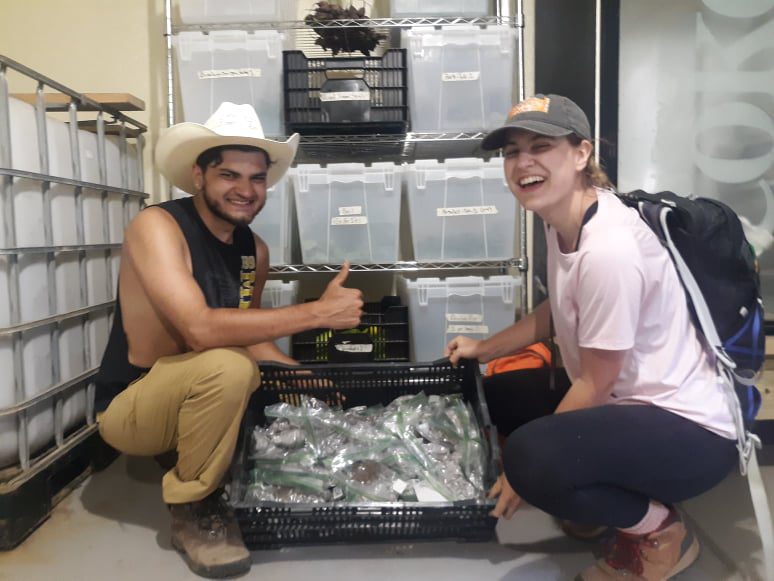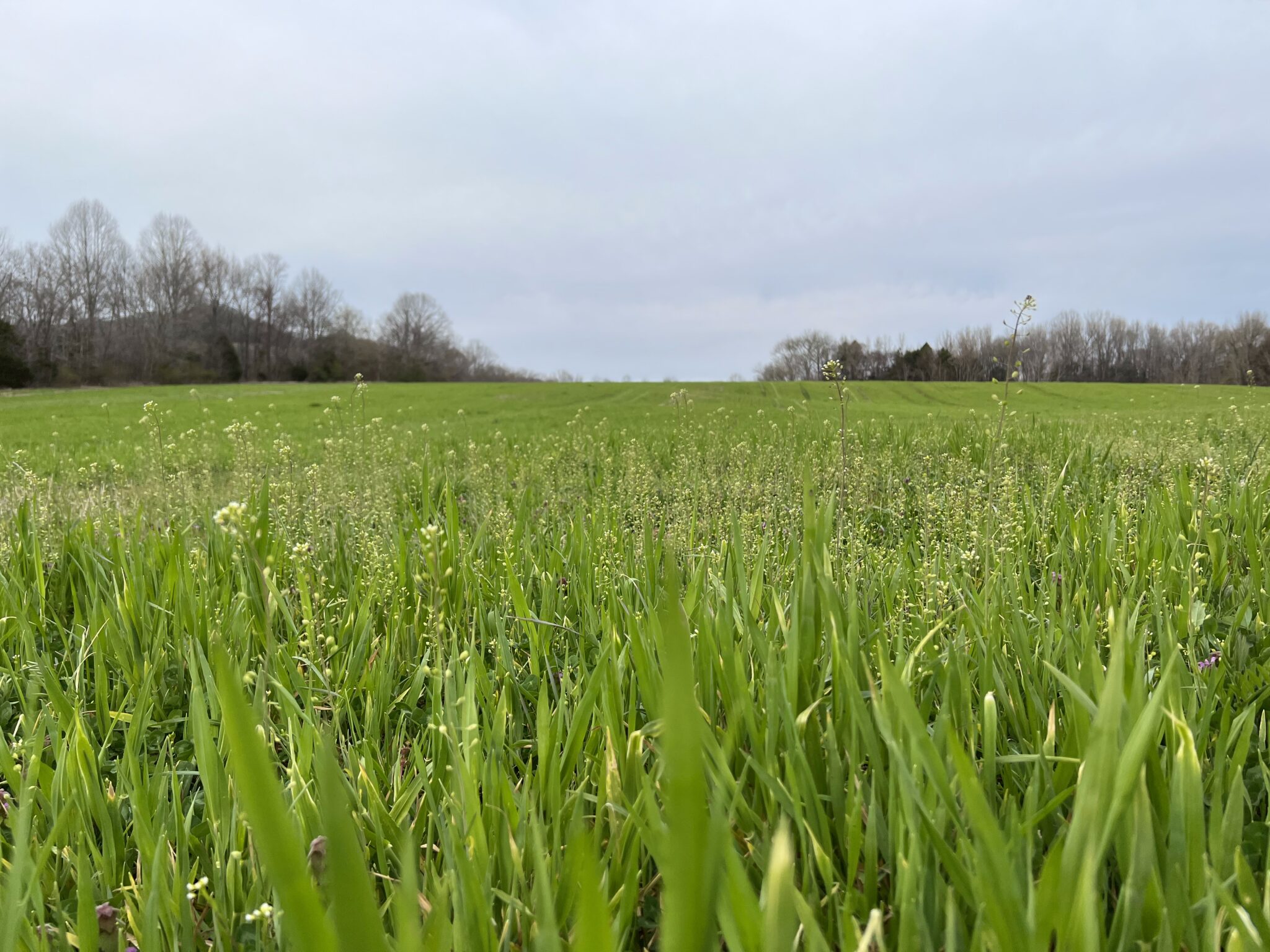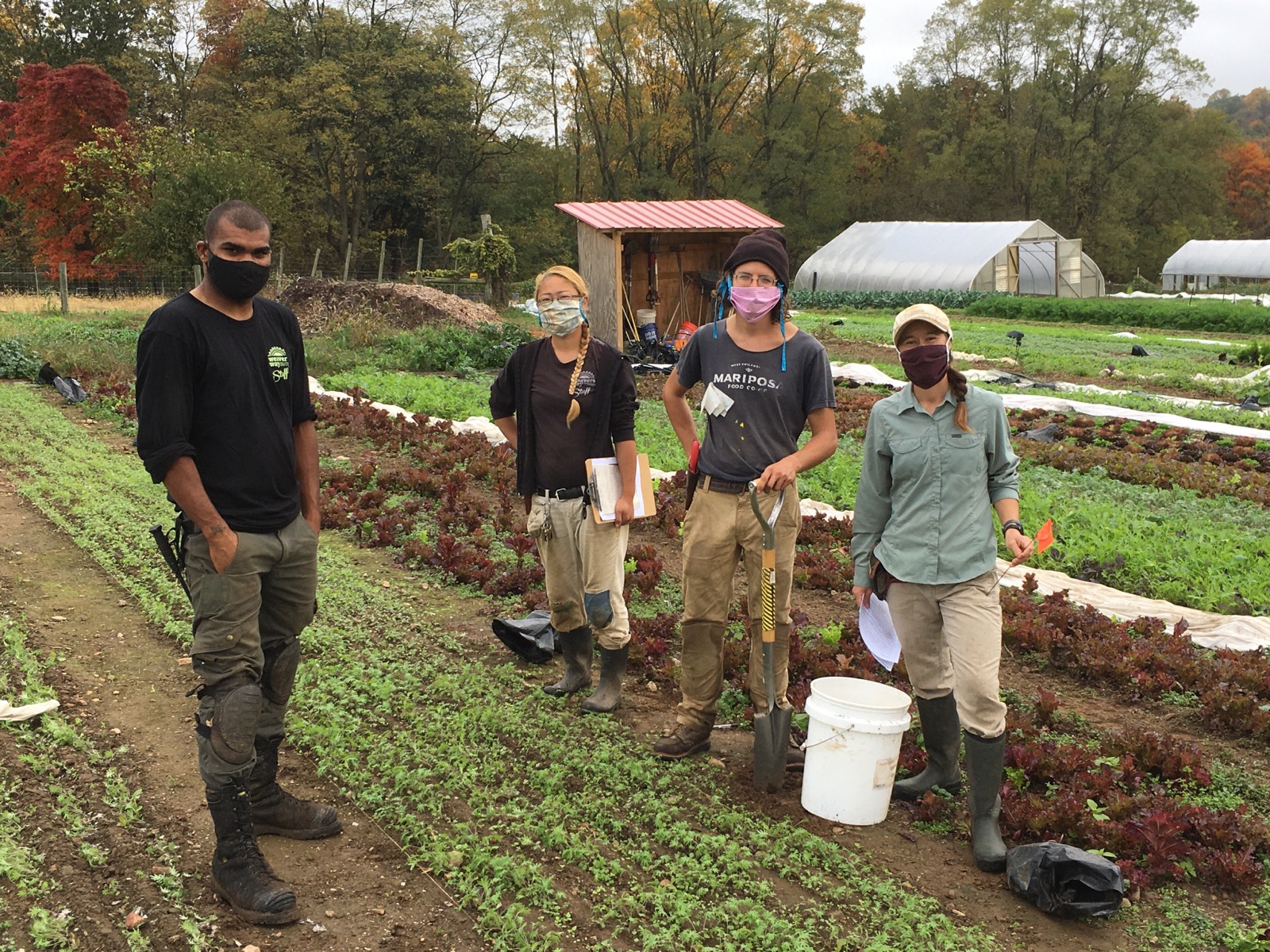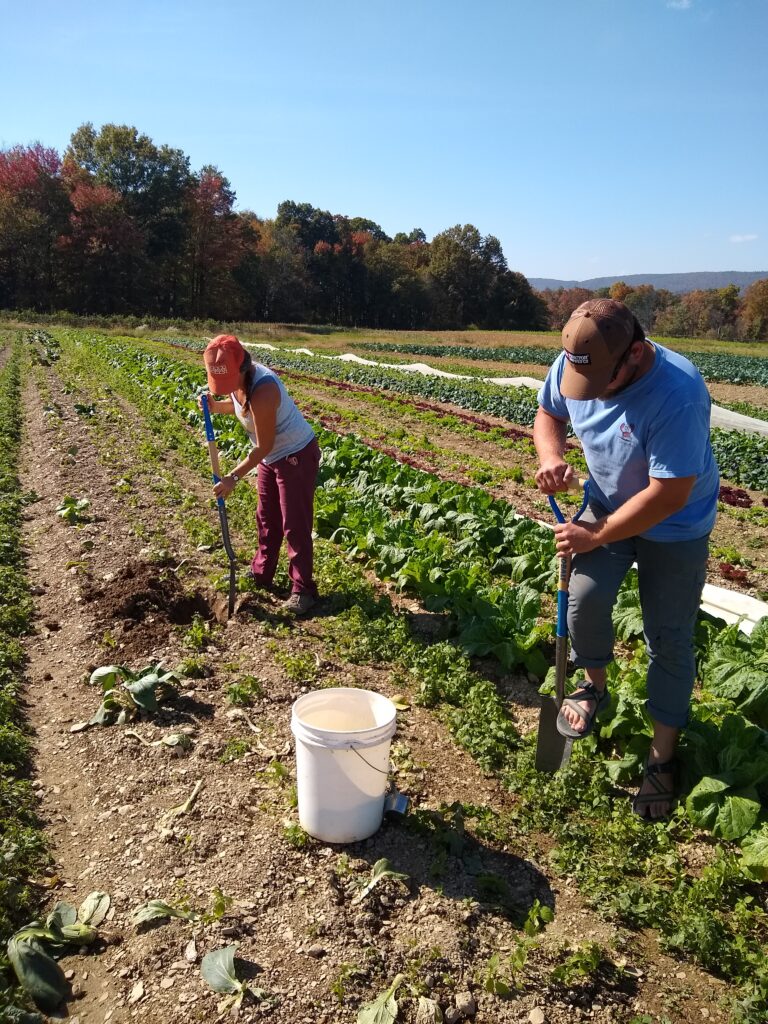Caney Fork Farms is an organic diversified vegetable, chestnut, and livestock operation using regenerative farming practices to build soil carbon levels and ecological biodiversity. Historically owned and operated by the family of former Vice President Al Gore, the farm became Caney Fork Farms in 2015.
“There was a pretty intensive planning operation,” says Zach Wolf, Farm Manager at Caney Fork. Since officially becoming Caney Fork Farms, they have developed market gardens, field crop systems, high tunnels, and a sizable livestock operation to raise grass fed beef, pasture-raised pork, and entirely grass fed lamb.
In 2020, they obtained over 250 acres of conventionally farmed land and are slowly transitioning it to organic production. Now, managing almost 700 acres of land, 550 of which are certified organic, Caney Fork is building more integrated farming systems by producing their own hay forage, grain, and agroforestry crops in addition to managing their market garden and vegetable CSA.
For Caney Fork Farms, the reasons behind using organic, regenerative, and integrated farming practices is backed by science.
In 2019, they took a series of soil carbon samples of the main farm acreage to get a baseline of certain metrics, such as soil carbon levels. When Caney Fork obtained the over 250-acre plot, locally known as Lock Seven Farm, they took another series of carbon samples. Using that baseline data as a comparison, they can calculate changes in soil health metrics as they transition the newly acquired land to organic agricultural production.
As they transition the land, Caney Fork is seeing exponential increases in soil carbon levels compared to baseline measurements. Although farms usually see the most dramatic change in soil carbon within the first years of transitioning from conventional to organic farming practices, to see such growth is still gratifying.

“We’ve seen a 35% increase in soil carbon within the first 20 months of implementing regenerative practices,” says Shaylan Kolodney, Research Coordinator and Livestock Hand at Caney Fork Farms who was a part of the original team that collected baseline soil samples.
While research at the farm has primarily surrounded exploring soil carbon and general soil health, researchers have begun biological monitoring and collecting data on nutrient quality of crops.
“The biological monitoring piece is just starting to unfold,” says Kolodney. For Caney Fork Farms, biological monitoring involves assessing the biodiversity of the farm environment across plant and animal species. In combination with soil health, this data can paint a more comprehensive picture of how farm operations and the local environment interact with one another. With a heavy emphasis on bird monitoring, they have identified over 50 species on the farm since beginning biological monitoring in 2021.
Among other research initiatives they are implementing at the farm, they are collaborating with Walter Goldstein from the Mandaamin Institute in a corn trial to assess different corn varieties and their ability to both fix nitrogen and perform under their organic growing conditions while also participating in a mung bean trial with Matt Blair from Tennessee State University to determine the suitability of the legume in southeastern organic growing conditions.
While Caney Fork Farms works with its own network of researchers and soil scientists, that network has grown much larger since joining OpenTEAM in 2019.
“The biggest benefit that we’ve had with OpenTEAM is the community aspect of it and learning from other Hubs in terms of how they’re doing things when it comes to research,” says Kolodney, “One of our goals at Caney Fork is to tell that story of conventional management transitioning into organic and, with the support of OpenTEAM and our Research Board, telling that story to the scientific community.”
Research remains a central part of the work that Caney Fork is doing to ensure their practices are yielding positive impacts on the environment and their food production.






